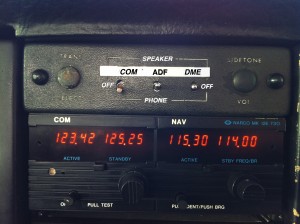Heathrow CTR Infringement
Posted by flysynergy on Oct 31, 2012 in Flight Safety | Comments Off on Heathrow CTR InfringementDescription
On 28/08/2012, G-BGFX was being flown by a student pilot on a return trip from Goodwood (EGHR). During the latter stages of the flight, an infringement of the London CTR occurred and the following is a description of the event from the student who was flying solo at the time. The student has kindly agreed for the event to be shared with the intention that pilots can learn from the two main factors that contributed to the infringement.
"As I routed up from Goodwood to Guildford I continued to follow the heading on my Directional Indicator as calculated and entered into my plog. However, the DI (without my current realisation) had started to drift significantly. As a result, I drifted off track and subsequently lost track of my position. As I started to concentrate on locating my position I lost track of time and therefore position along route. When I realised I was significantly off track/lost I tried to provide myself with a position fix using the VOR/DME in the aircraft. In doing so however, I managed to knock the toggle-switch of the radio's audio to the OFF position, and in doing so virtually turning my radio's off without my knowledge. Now being very lost I tried to contact Farnborough Radar to ask for assistance to receive no communications due to the state of the radio's. Then as I tried to focus on fixing the radio issue I flew into the Heathrow CTR without knowing. Once two-way communication was restored with Farnborough Radar, they assisted me in removing myself from controlled airspace by performing timed turns as the DI was deemed U/S at this stage and I could not work out a westerly direction which was required for me to fly. Farnborough Radar then continued to help me all the way back into the Fairoaks circuit."
Factor 1: DI / Compass Checks
The 'drift' experienced on the direction indicator resulted in the pilot flying an incorrect heading and thus departing from the planned track.
The direction indicators (DI) are affected by gyroscopic precession which will cause the instrument to precess over a 10 - 15 minute period. As a result, the direction indicator should always be re-aligned with the compass during the FREDA check, remembering that it should only be re-aligned when in straight and level, unaccelerated flight. It is also good practice to perform a DI / compass check before turing onto a new track.
Factor 2: Comm Audio Selection
 The loss of communication was a result of inadvertently selecting the comm audio to OFF. The following image shows a common Cessna 152 audio panel arrangement. At the top of the unit are the selectors for the COM, ADF and DME audio. Each toggle switch has three positions; Speaker (Top), OFF (Middle) and Phone (Bottom). During normal operation, the COM selector should be in 'Phone' position so that the air traffic audio is transmitted through the headset.
The loss of communication was a result of inadvertently selecting the comm audio to OFF. The following image shows a common Cessna 152 audio panel arrangement. At the top of the unit are the selectors for the COM, ADF and DME audio. Each toggle switch has three positions; Speaker (Top), OFF (Middle) and Phone (Bottom). During normal operation, the COM selector should be in 'Phone' position so that the air traffic audio is transmitted through the headset.
It has been known for the COM selector to accidentally be nudged into the OFF position during a frequency change or similar action. This will result in being unable to hear the transmission of ATC. For this reason, if a radio failure is suspected, a check should be made as to the postion of these switches.
